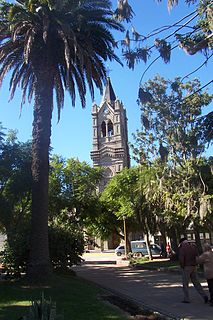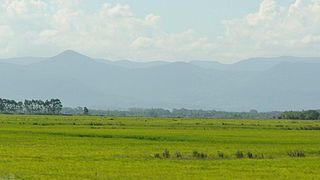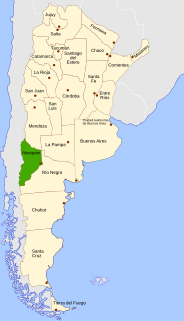Life
Kaspar Jakob (Spanish: Santiago) was born and raised in Herisau, [1] Canton Appenzell Ausserrhoden, Switzerland, as the oldest of 12 children. He attended school in the nearby town of St. Gallen, where his teacher Bernhard Wartmann raised his interest in the science of nature. Wartmann was a well known botanist and director of the Museum of History of Nature in St. Gallen. [2]

Herisau is a municipality of the canton of Appenzell Ausserrhoden in Switzerland. It is the seat of the canton's government and parliament; the judicial authorities are situated in Trogen.

Switzerland, officially the Swiss Confederation, is a country situated in western, central and southern Europe. It consists of 26 cantons, and the city of Bern is the seat of the federal authorities. The sovereign state is a federal republic bordered by Italy to the south, France to the west, Germany to the north, and Austria and Liechtenstein to the east. Switzerland is a landlocked country geographically divided between the Alps, the Swiss Plateau and the Jura, spanning a total area of 41,285 km2 (15,940 sq mi). While the Alps occupy the greater part of the territory, the Swiss population of approximately 8.5 million people is concentrated mostly on the plateau, where the largest cities are to be found: among them are the two global cities and economic centres Zürich and Geneva.

St. Gallen or traditionally St Gall, in German sometimes Sankt Gallen is a Swiss town and the capital of the canton of St. Gallen. It evolved from the hermitage of Saint Gall, founded in the 7th century. Today, it is a large urban agglomeration and represents the center of eastern Switzerland. Its economy consists mainly of the service sector. Internationally, the town is known as the home of the University of St. Gallen.
For economic reasons the Roth family emigrated to Argentina in 1866, where they initially settled in the Colonia Baradero (Buenos Aires Province). There, Roth started a small business with leather goods. In his sparetime he collected plants, butterflies and rocks. He married Elisabeth Schuetz, a teacher educated in Switzerland, who emigrated with her family to Argentina in 1872 as well.

Argentina, officially named the Argentine Republic, is a country located mostly in the southern half of South America. Sharing the bulk of the Southern Cone with Chile to the west, the country is also bordered by Bolivia and Paraguay to the north, Brazil to the northeast, Uruguay and the South Atlantic Ocean to the east, and the Drake Passage to the south. With a mainland area of 2,780,400 km2 (1,073,500 sq mi), Argentina is the eighth-largest country in the world, the fourth largest in the Americas, and the largest Spanish-speaking nation. The sovereign state is subdivided into twenty-three provinces and one autonomous city, Buenos Aires, which is the federal capital of the nation as decided by Congress. The provinces and the capital have their own constitutions, but exist under a federal system. Argentina claims sovereignty over part of Antarctica, the Falkland Islands, and South Georgia and the South Sandwich Islands.

Baradero is the oldest town of Buenos Aires Province, Argentina, being founded in 1615. It is the administrative centre for Baradero Partido.

Buenos Aires is the largest and most populous Argentinian province. It takes the name from the city of Buenos Aires, which used to be part of the province and the provincial capital until it was federalized in 1880. Since then, in spite of bearing the same name, the province does not include the national capital city proper, though it does include all other localities of the Greater Buenos Aires metropolitan area surrounding it. The current capital of the province is the city of La Plata, founded in 1882.
After finding the first fossils he became an ardent explorer and collector of extinct mammals. Already in 1878 he was able to sell a collection of fossils to Dr. Laussen, a Dane, who gave these bones to the Museum of Zoology in Copenhagen. [2] Roth was encouraged to continue finding and collecting rare prehistoric mammals as a profession. He contacted Prof. Carl Vogt at the University of Geneva, who was interested to buy a further collection from Roth. The transport arrived in Geneva heavily damaged. Therefore, Roth traveled to Switzerland in 1880 to repair the skeletons in the laboratories of the university. There, he had the additional benefit of being able to attend lectures on geology, zoology and osteology.

A fossil is any preserved remains, impression, or trace of any once-living thing from a past geological age. Examples include bones, shells, exoskeletons, stone imprints of animals or microbes, objects preserved in amber, hair, petrified wood, oil, coal, and DNA remnants. The totality of fossils is known as the fossil record.

Mammals are vertebrate animals constituting the class Mammalia, and characterized by the presence of mammary glands which in females produce milk for feeding (nursing) their young, a neocortex, fur or hair, and three middle ear bones. These characteristics distinguish them from reptiles and birds, from which they diverged in the late Triassic, 201–227 million years ago. There are around 5,450 species of mammals. The largest orders are the rodents, bats and Soricomorpha. The next three are the Primates, the Cetartiodactyla, and the Carnivora.

Copenhagen is the capital and most populous city of Denmark. As of July 2018, the city has a population of 777,218. It forms the core of the wider urban area of Copenhagen and the Copenhagen metropolitan area. Copenhagen is situated on the eastern coast of the island of Zealand; another small portion of the city is located on Amager, and is separated from Malmö, Sweden, by the strait of Øresund. The Øresund Bridge connects the two cities by rail and road.
After his return to Argentina, he continued his search in the basin of the Paraná River and in the Entre Ríos Province belonging to the Pampas. He published his findings in his mother tongue, German. [3]

The Paraná River is a river in south Central South America, running through Brazil, Paraguay, and Argentina for some 4,880 kilometres (3,030 mi). It is second in length only to the Amazon River among South American rivers. The name Paraná is an abbreviation of the phrase "para rehe onáva", which comes from the Tupi language and means "like the sea". It merges first with the Paraguay River and then farther downstream with the Uruguay River to form the Río de la Plata and empties into the Atlantic Ocean.

Entre Ríos is a central province of Argentina, located in the Mesopotamia region. It borders the provinces of Buenos Aires (south), Corrientes (north) and Santa Fe (west), and Uruguay in the east.

The Pampas are fertile South American lowlands that cover more than 750,000 km2 (289,577 sq mi) and include the Argentine provinces of Buenos Aires, La Pampa, Santa Fe, Entre Ríos and Córdoba; all of Uruguay; and the southernmost Brazilian State, Rio Grande do Sul. The vast plains are a natural region, interrupted only by the low Ventana and Tandil hills, near Bahía Blanca and Tandil (Argentina), with a height of 1,300 m (4,265 ft) and 500 m (1,640 ft), respectively.
Roth was continuously looking for buyers to generate income for his large family. Such an opportunity arose in 1887 when he traveled to Switzerland with his family. The Swiss geologist Prof. Albert Heim, ETH Zurich had recommended that the Swiss authorities should buy his collection nr. 5. [2] Today, this collection is held by the Museum of Zoology at the University of Zurich and includes a huge, extinct ground sloth (Megatherium) as well as a large armored mammal (Glyptodon). [4] A special exhibition including the Roth collection was organized in 2000. [5] During his stay in Switzerland he joined Albert Heim on his hydrogeological excursions to study subterranean water flows. These experiences were of much value in his country of residence, Argentina.

Albert Heim was a Swiss geologist, noted for his three-volume Geologie der Schweiz.

ETH Zurich is a science, technology, engineering and mathematics university in the city of Zürich, Switzerland. Like its sister institution EPFL, it is an integral part of the Swiss Federal Institutes of Technology Domain that is directly subordinate to Switzerland's Federal Department of Economic Affairs, Education and Research. The school was founded by the Swiss Federal Government in 1854 with the stated mission to educate engineers and scientists, serve as a national center of excellence in science and technology and provide a hub for interaction between the scientific community and industry.

Ground sloths are a diverse group of extinct sloths, in the mammalian superorder Xenarthra. The term is used as a reference for all extinct sloths because of the large size of the earliest forms discovered, as opposed to existing tree sloths. The Pilosans of the Caribbean, the most recent survivors, lived in the Antilles, possibly until 1550 BC. However, radiocarbon dating suggests an age of between 2819 and 2660 BC for the last occurrence of Megalocnus in Cuba. Ground sloths had been extinct on the mainland of North and South America for 10,000 years or more. Their later survival in the Caribbean correlates with the later colonization of this area by humans. Some island populations persisted 5,000–6,000 years longer than their continental relatives.
Roth extended his range of paleontological expeditions to Patagonia, including the areas along the Rio Negro, Limay River and Chubut River, partly together with F. Machon, another researcher from Switzerland from 1885 to 1891. [2] There, he saw Nahuel Huapi Lake for the first time.
Francisco Moreno (known as Perito Moreno, the famous Perito Moreno Glacier in Patagonia is named after him), first director of the La Plata Museum in the new capital of the Province Buenos Aires, named Roth as head of the Department of Paleontology at this museum in 1895. His friend Florentino Ameghino worked at this institution as well. [2]
Moreno had a mandate from the Government of Argentina to work out a solution for the border disputes with Chile in the Andes region. Roth joined Moreno in 1897 – 1899 and again in 1902 on his expeditions. While at Lake Nahuel Huapi Moreno asked Roth to find a suitable place for a new settlement on the shores of this lake. He proposed a particular site and filed corresponding land claims for Swiss and German families already living in the area. This was the origin of the town to be named San Carlos de Bariloche later on. [2]
In a publication dated 1903 [6] Roth defined the order of Notoungulata as a category of prehistoric hoofed mammals found only in South America.
Roth was named professor for paleontology at the National University of La Plata in 1905. [1] In 1908 he also became director of the Geological-Topographical Institute of the Buenos Aires Province. In this capacity he organized a series of wells to find groundwater. The Argentine government sent him to the arid regions of the Santiago del Estero Province where he installed many wells. The local population was very grateful to get better access to drinking water.
His last expedition to Patagonia took place from 1921 to 1922. [2]













